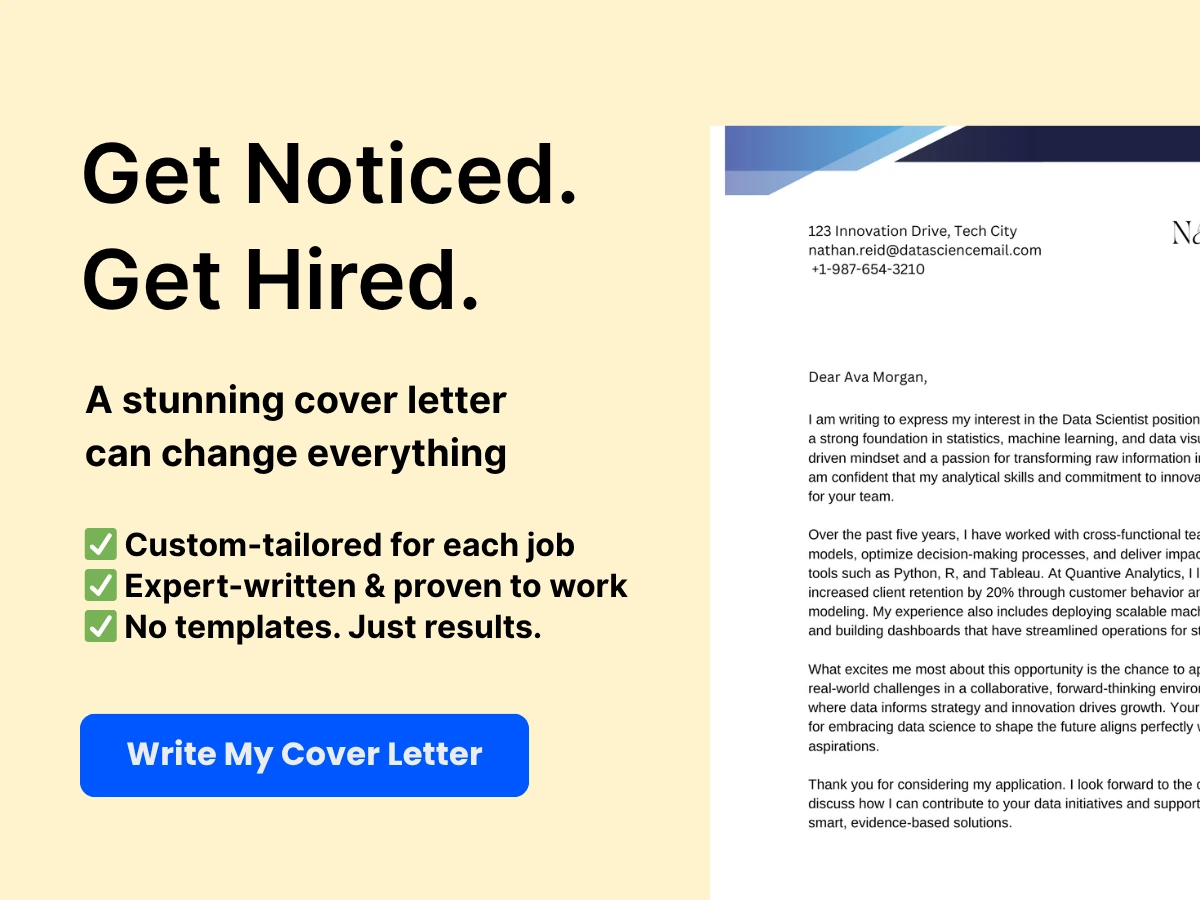Technical editing plays a vital role in ensuring that technical documents, such as reports, manuals, and technical instructions, are clear, concise, and error-free. Technical editing involves revising and improving written content for clarity, accuracy, and quality.
Definition of Technical Editing
Technical editing involves reviewing technical materials with a critical eye, from spelling and grammar to formatting and style, and ensuring that these materials are consistent with established guidelines and procedures. Technical editors work on various documents, including research papers, user manuals, product instructions, technical reports, and many more.
Importance of Technical Editors
Technical editing is essential for various industries, including technology, engineering, medical, and scientific fields, to ensure precision and clarity in communicating complex technical ideas to a broad audience. Technical editors help to ensure that the intended audience can quickly and easily understand technical content by refining the language and presentation, while also ensuring that the technical material is both accurate and relevant.
Technical editors play a significant role in helping businesses maintain their professional reputation and avoid potential risks, such as legal or financial damage, by ensuring that their documents are error-free and well-written. Furthermore, technical editors assist in improving the overall quality of documents, making them easy to understand and clear, which results in reduced miscommunication and errors.
The significance of technical editors lies in their expertise and ability to refine technical material to make it more accessible, relevant, and engaging for the intended audience. As businesses continue to grow and expand in their respective fields, the role of technical editors becomes increasingly crucial in ensuring that technical documents are well-written and accurately convey complex technical information.


Technical editing plays a crucial role in ensuring the proper communication of technical information, maintaining a company’s professional reputation, and reducing the risk of errors and miscommunication. Technical editors must work meticulously to ensure that technical documents are clear, concise, and easy to understand, as their work is essential for promoting success in businesses and industries that rely on technical communication.
Qualifications for Technical Editor Job
As with any job, certain qualifications are necessary for success as a Technical Editor. These qualifications include education and background, required skills, character traits, and certification.
Education/Background
A Technical Editor typically has a bachelor’s degree in technical writing, journalism, English, or a related field. Knowledge of the technical subject matter is also important, particularly for industries such as engineering, computer science, or medical technology. Experience in technical writing or editing is a plus, especially if it involves the publication of technical documents in print or online formats.
Required Skills
Technical editing requires strong communication skills, particularly in written form. The Technical Editor must be able to understand complex technical information and present it in a clear and concise manner for a variety of audiences, including technical and non-technical readers. Attention to detail is crucial, as is an ability to work independently and manage time effectively. Familiarity with industry-specific style guides, such as the Chicago Manual of Style or the Associated Press (AP) Stylebook, is also valuable.
Character Traits of a Technical Editor
The Technical Editor must be reliable, responsible, and accountable. The editor must work well under pressure and be able to meet deadlines. He or she must be able to handle criticism, feedback, and revisions gracefully, and remain professional in all communications with clients and team members. Creativity, problem-solving skills, and adaptability are also important traits, as the Technical Editor may need to find solutions to editorial challenges or adapt to different client requirements or style preferences.
Certification
While certification is not always required for Technical Editing jobs, it can be a valuable asset. Professional organizations such as the American Society of Journalists and Authors (ASJA) or the Society for Technical Communication (STC) offer certification programs that can demonstrate the Technical Editor’s expertise and professionalism to potential clients or employers. Additionally, certification programs such as the Certified Professional Technical Communicator (CPTC) can provide networking opportunities and ongoing professional development resources.


Technical Editing is a challenging and rewarding career path that requires a combination of education, skills, character traits, and certification. By understanding and acquiring these qualifications, aspiring Technical Editors can build a blueprint for success in their chosen profession.
Roles and Responsibilities of a Technical Editor
As a Technical Editor, your primary responsibility is to review and edit technical documents. This involves ensuring that the content is accurate, consistent, and easy to read. In addition, you must ensure compliance with style guides and company standards to maintain consistency across all written materials.
Your work as a Technical Editor requires you to be meticulous in verifying information and facts found in the content. You must ensure that all information and data included in the document are accurate and reliable. This is especially important in technical documents that incorporate complex scientific, technical, or medical information.
Document readability is also a critical aspect of your role. You must ensure that technical documents are written in a way that is easy to understand for the target audience. This means reviewing documents for clarity, coherence, and consistency to ensure that readers can easily understand the information presented.
As a Technical Editor, you are a vital team member responsible for ensuring that technical documents are of the highest quality. Your ability to edit documents with attention to detail and ensure readability is crucial to the success of the documents and the organization. When it comes to technical editing, there are various types of documents that technical editors need to edit. These documents are usually written by technical writers or subject matter experts, and they are intended to convey complex technical information to specific audiences. Technical editors are responsible for ensuring that these documents are highly accurate, well-structured, and easy to understand. Below are the most common types of documents that technical editors edit:


Technical Papers
Technical papers are formal documents that present the findings of technical research. These papers are generally peer-reviewed and published in academic journals or conference proceedings. Technical editors ensure that these papers are well-written, properly cited, free of grammatical errors, and structured logically. They also check whether the paper follows the appropriate formatting and style, and whether it meets the requirements of the publisher.
Technical Reports
Technical reports are comprehensive documents that provide information about a specific technical issue or topic. These reports may include research findings, case studies, technical specifications, and other information that is relevant to the subject. Technical editors review the report for accuracy, clarity, and consistency. They also ensure that the report is well-structured and easy to read. Technical reports may be created for internal or external use, and they may be used for decision-making by engineers, managers, or executives.
Technical Manuals
Technical manuals provide instructions or guidelines for using a product or a system. These manuals are often created by technical writers, and technical editors review them to ensure that they are accurate, complete, and user-friendly. They may check the use of technical jargon, assess the clarity of the instructions, and ensure that the manual is organized properly. Technical manuals may be created for a wide range of products, from consumer electronics to industrial machinery.
Technical Proposals


Technical proposals are documents that present a plan for carrying out a technical project or initiative. These proposals may be created by engineers, consultants, or other technical professionals. Technical editors assist in ensuring that the language used in technical proposals aligns with the audience addressed, and that the proposal is persuasive, logical, and concrete. Technical proposals are used to win business, funding or partnerships.
Technical Specifications
Technical specifications are documents that define the requirements for a technical product or system. For example, a technical specification may provide information on the physical dimensions of a product, the materials used, or the performance characteristics. Technical editors review the specification for consistency, accuracy, and completeness. They may also check whether the specification meets the standards of the industry or the regulatory agency.
To summarize, Technical editing requires a deep understanding of various types of technical documents. Technical editors must ensure that these documents are highly accurate, clear, and easy to understand. Technical papers, technical reports, technical manuals, technical proposals, and technical specifications represent some of the most common document types that technical editors regularly edit. Ensuring that these documents are free of errors is essential to ensure the success of the project, the product, or the organization.
Editing Process Overview
The editing process involves numerous stages to ensure that a technical document is informative, accurate, and polished. As a technical editor, you must follow a series of procedures to maintain the overall structure of a written piece. Here are the seven essential steps that you need to consider during the editing process:
- Understand and Research the Content
The first step is to understand and research the technical content of the document you are editing. As a technical subject matter expert, you need to identify the technical jargon, unique terms, and ideas to ensure that you have a clear understanding of the document.


- Review and Fix Grammar and Syntax Errors
Next, it’s essential to fix any grammar and syntax errors. Ensure that the document adheres to the rules of the English language and follow the appropriate style guides in place. Correct mistakes such as word tense, punctuation, spelling errors, and sentence structure.
- Confirm Accuracy of Technical Information
Technical accuracy is an integral part of the editing process. As a technical editor, verify all technical information is accurate from start to end, and every piece of data is consistent with the document. Check any figures, mathematical expressions, equations, and formulae for accuracy.
- Check for Consistency and Clarity
The document should be consistent regarding layout, design, and formatting. Consistency will create a sense of professionalism for the document. Ensure that the document is clear and concise so that it can be understood and interpreted by a broad audience.
- Verify Proper Citations and References
Verify that all citations and references used in the document are correct, current, and appropriate. Check that referencing styles adhere to the relevant style guide.
- Review Style Guide Compliance
The style guide outlines requirements such as formatting, punctuation, and citation styles for the document. The editor should ensure that the document is consistent with the style guide; otherwise, it may negatively impact the audience’s interpretation.
- Proofread
Finally, proofread the document thoroughly. Check for grammatical errors, punctuation errors, formatting errors, spelling mistakes, and typos. A cohesive and error-free document will be more appealing to the audience.


The editing process is a critical step in producing a technical document. By following these seven essential steps, the technical editor can ensure that the document is informative, accurate, and polished.
Tools and Applications Used by Technical Editors
Technical editors require various tools and applications to carry out their duties. Some of the commonly used tools and applications are:
Microsoft Office Suite: Word, Excel, PowerPoint
Microsoft Office Suite is one of the essential tools for technical editors. Word is used for editing and formatting documents, Excel for creating and analyzing data, and PowerPoint for creating presentations. These tools are useful for creating, editing, and reviewing complex documentation, presentations, and spreadsheets.
Adobe Acrobat
Adobe Acrobat is a widely used tool for managing digital documents. Technical editors use Adobe Acrobat to edit, annotate, and review PDF documents. Adobe Acrobat comes in handy when dealing with large volumes of documents and collaborating with teams remotely.
Version Control and Collaboration Tools
Version control tools like Git, Mercurial, and Subversion help to manage changes in files and documents. These tools allow editors to track changes made, compare different versions of the document and revert to the previous version if necessary. Collaboration tools such as Slack, Asana, and Trello facilitate communication and coordination among team members.


Content Management Systems (CMS)
Content Management Systems help to organize and manage digital content such as web pages, blogs, and documentation. Technical editors use CMSs to create, edit, and publish content on the internet. Examples of CMSs include WordPress, Joomla, and Drupal.
Online Resources and Reference Libraries
Technical editors rely on various online resources and reference libraries to enhance their knowledge and improve their work. These resources include dictionaries, thesauruses, industry guides, and style guides. Examples of online resources for technical editors include Google Scholar, ResearchGate, and Academia.edu.
Technical editors require a range of tools and applications to carry out their duties effectively. The tools listed above are just a few of the many tools that technical editors rely on to produce high-quality work. Mastering these tools and applications can help technical editors increase their productivity, reduce errors, and produce better quality work.
Best Practices for Technical Editors
As a technical editor, it is crucial to keep yourself updated with the latest industry developments and advances. This will not only help you stay relevant in the field, but it will also allow you to understand the newest trends and technologies in your industry. By keeping yourself informed, you can better support your technical writing team and provide more accurate edits and feedback.
Maintaining effective communication with your technical writing team is also a critical part of your job. Understanding the project requirements, deadlines, and goals will enable you to ensure the content is consistent with the company’s vision or the client’s needs, and it adheres to the established standards. Establish clear lines of communication with your team to ensure that you are always on the same page, and that you can efficiently resolve any issues that arise.
Another essential aspect of your job is building positive relationships with engineers and subject matter experts (SMEs). You’ll need to work closely with these individuals to ensure that the content produced is accurate, concise, and technical enough to meet the needs of your audience. Cultivating a strong positive rapport with engineers and SMEs can help you build trust with them, which can make the editing process a lot smoother and more enjoyable for everyone involved.
Finally, it’s essential to create a process that works for your team and company. Each project is unique and has specific requirements, and that’s why it’s important to establish a process that takes those factors into account. Develop a checklist or a standard operating procedure (SOP) that outlines the editing process, including timelines, quality expectations, and approved style guidelines. Additionally, make sure your team understands the process and always has access to the necessary resources, like manuals or style guides.
Being a technical editor requires a specific skill set that includes excellent communication, technical knowledge, and attention to detail. By following these best practices, you can create a blueprint for success that will help you become a successful technical editor and support your team’s technical writing needs.
Challenges of Technical Editing
Being a technical editor comes with a fair share of challenges that one must be prepared to face in the line of duty. Some of the most common stumbling blocks faced by technical editors include:
Technical Jargon and Language
As a technical editor, you will be dealing with highly specialized content that is typically written in complex technical jargon and language. This can make it extremely challenging to understand and accurately edit the content to ensure it is clear and concise for its intended audience. Therefore, technical editors must have excellent knowledge and skills in the relevant technical fields to ensure they can communicate effectively in the intended language.
Understanding Complex Topics
In addition to technical jargon and language, technical editors also need to have a solid understanding of the complex technical topics they are editing. Without this, it can be difficult to identify technical inaccuracies or inconsistencies, leading to flawed content. Therefore, it is crucial to have in-depth knowledge and experience in the relevant technical areas.
Deadlines and Time Pressure
Technical editing projects often come with strict deadlines and time pressures that editors must adhere to. These deadlines may be related to the publication schedule or regulatory requirements, which means any delay in editing could have far-reaching consequences. As a result, technical editors must have excellent time-management skills that enable them to meet deadlines without compromising on the quality of work.
Document Versioning
Lastly, technical editors need to be proficient in document versioning. Technical documents usually go through multiple iterations before the final version is produced. Keeping track of version changes can be challenging, especially when dealing with multiple versions of the same document. Technical editors must have a good understanding of version control processes to ensure they can effectively handle any changes and maintain version consistency throughout the editing process.
Being a technical editor requires a high level of expertise and skills to successfully navigate complex technical content. To ensure success, technical editors must be proficient in technical jargon and language, possess a solid understanding of complex topics, have excellent time-management skills, and be proficient in document versioning.
Sample Job Descriptions for Technical Editors
Job Title and Overview
The position of technical editor is a crucial role in any company that produces technical materials. Technical editors are responsible for ensuring that all technical documents, manuals, and other materials are accurate, readable, and free of errors. They collaborate with technical writers, subject matter experts, and other stakeholders to ensure that all materials are consistent with the company’s standards, tone, and style.
Required Qualifications and Experience
To be considered for a technical editor position, candidates must hold a bachelor’s degree in a relevant field, such as English, communications, or technical writing. They should have demonstrated experience in editing technical materials and knowledge of technical writing principles, grammar, and style conventions. Candidates with knowledge of specific industries or software applications may have an advantage in the selection process.
Roles and Responsibilities
As a technical editor, your primary responsibility is to ensure that all technical materials produced by your organization are clear, accurate, and consistent with the company’s standards. Your duties may include:
- Editing technical materials, including manuals, reports, and other supporting documentation
- Ensuring that all materials adhere to the company’s tone, style, and branding guidelines
- Collaborating with subject matter experts and other stakeholders to ensure technical accuracy and consistency across materials
- Conducting quality assurance checks to ensure that all materials are error-free and conform to industry standards
- Managing the production process for technical materials, including version control and distribution
- Participating in the planning and development of technical materials
Success Factors
To excel in a technical editor role, candidates should have:
- Strong written and verbal communication skills
- The ability to understand technical concepts and translate them into clear, easy-to-read language
- A keen attention to detail and an ability to spot errors and inconsistencies
- The ability to work collaboratively with technical writers, subject matter experts, and other stakeholders
- Excellent time-management skills and an ability to manage multiple projects simultaneously
- A commitment to quality and continuous improvement
A successful technical editor is a critical thinker with excellent communication skills and a passion for ensuring that technical materials are accurate, clear, and consistent with the company’s standards. With the right qualifications and experience, and a commitment to excellence, a technical editor can help drive increased efficiency, customer satisfaction, and success for any organization.
Salary and Job Outlook for Technical Editors
Technical editing is a career that has become increasingly popular in recent years. With businesses across various industries producing technical documents, reports, and manuals to communicate their ideas and expertise, there is a growing need for professional editors to ensure readability and consistency in these documents. Technical editors are skilled professionals who can turn dense, jargon-heavy material into clear and concise language that can be easily understood by a wide audience.
If you’re thinking of becoming a technical editor, you may be wondering about the salary and job outlook for this field. Here’s what you need to know:
Average Salary
According to the U.S. Bureau of Labor Statistics, the median annual wage for editors was $61,370 as of May 2020. However, this figure can vary based on various factors, such as education level, years of experience, industry, and location. Technical editors, in particular, may earn higher salaries than general editors given the specialized nature of their work.
Some technical editors may work as independent contractors, while others may be employed by corporations, government agencies, or publishers. Those who work full-time may also receive benefits such as health insurance and retirement savings plans, which can add to their overall compensation package.
Salary Range by Location
Like many other professions, the salary range for technical editors can also vary depending on their geographic location. For instance, an editor in San Francisco or New York City may earn a higher salary than someone in a smaller town or rural area. Factors such as cost of living and regional job demand can impact salaries.
According to Glassdoor, the national average salary for a technical editor is $57,283 per year. However, salaries can range from $38,000 to $89,000 depending on location, experience, and company size.
Job Demand and Growth
The job outlook for technical editors is generally positive, with demand expected to grow for skilled professionals who can edit and write technical documents clearly and accurately. Companies and organizations will likely continue to need technical editors who can transform complex information into easily understandable content for their audience.
According to the U.S. Bureau of Labor Statistics, employment of editors is projected to decline 2 percent from 2019 to 2029. However, this decline is expected to be mainly due to decreasing demand for editors in the newspaper and book publishing industries. Job growth for editors in technical and scientific fields is expected to remain steady or increase.
As companies continue to produce more technical documents and manuals, the importance of having professional editors on staff will only increase. As such, there is a growing need for skilled technical editors who are adaptable and can work across various industries.
Technical editing is a lucrative and dynamic field that can offer exciting opportunities for those with a passion for language and the ability to communicate technical information in a clear and concise manner.
Related Articles
- 40 Retail Associate Resume Examples in 2023
- Employment Verification Letter Examples for 2023
- Politely Declining a Job Offer: Email Samples and Tips
- Intern Pharmacist Resume: Examples for 2023
- IT Assistant: Job Description, Salary, and Skills for 2023








